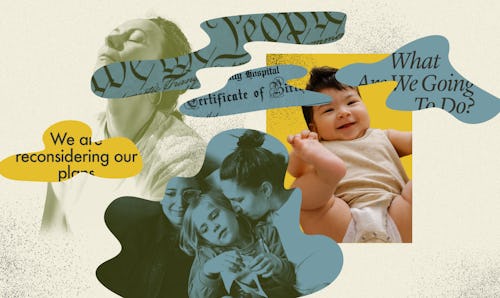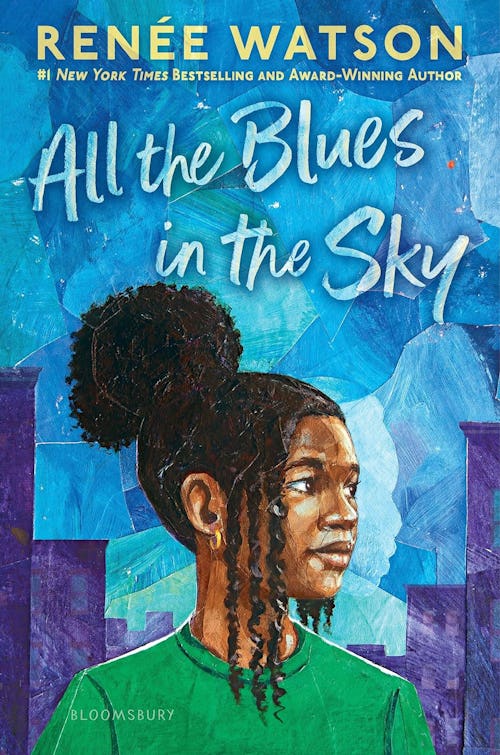
When Hurricane Milton made landfall along Florida's Gulf Coast as a Category 3 storm on the evening of Wednesday, Oct. 9, hospitals were hunkered down statewide. Even those on the East Coast prepared for the worst. The hospital Baptist Health is situated on the bank of the St. Johns River in downtown Jacksonville, where most days, you can see the reflection of the city’s skyline in the calm waters. But in extreme weather conditions, the river becomes a looming threat to the patients and providers inside.
Hospitals are critical to any community, but Baptist Health serves more people in its emergency room than any other hospital in the county, and its adjoining pediatric hospital, Wolfson Children’s, houses a level IV NICU that serves kids not just in Florida but southeast Georgia, too. When a hurricane is bearing down on them, how is anyone supposed to decide how to keep them safe? And what about the parents giving birth in the labor delivery unit, or coming in for needed C-sections or inductions?
In 2024 alone, the United States endured 27 “climate disaster events” exceeding $1 billion in damages each, according to the National Oceanic and Atmospheric Administration. Storms battered Florida and Texas and Hurricane Helene decimated countless homes and businesses in North Carolina, killing 105. The 2025 new year began with the Los Angeles fires, which have destroyed more than 16,000 structures and torched almost 60,000 acres of land so far.
The climate crisis is here and Mother Nature is demanding our attention. It has become everyone’s problem, and like all systemic problems, it has a particular effect on families. Whether it's rescheduling one person’s routine induction before a hurricane or a health care desert is created when a hospital burns down and never gets rebuilt, the climate crisis is already changing the way pregnant people, children, and babies get quality health care.
The options for a hospital in a hurricane are simple on the surface: remain open, or close and evacuate. But no two patients are alike, and when you’re talking about birth, well, babies wait for nothing and no one. In fact, incoming hurricanes have a way of making more of them decide it’s time to be born, according to stories from medical experts.
“If we close the door and a pregnant person has nowhere to go, what's going to happen?” says registered nurse Shannon Wainright, MBA, director of women’s and children’s services at Southeast Georgia Health System in Brunswick. “Our goal is to provide services at a scale that is reasonable during a storm. We're not going to be doing elective surgeries. We're not going to be doing anything that's not necessary, but birth is necessary. These patients are pregnant and the baby is coming, and oftentimes changes in [barometric] pressure and stress can definitely have an impact on a patient going into labor.”
Tornadoes, earthquakes, and wildfires happen suddenly, with little to no warning. A report from Stanford University’s & The West includes a harrowing description from a Paradise, California, nurse on duty during the 2018 Camp Fire. Her supervisor assured her they’d be alerted if they needed to leave, and then she looked out the window to see a fire burning just across the parking lot. She and her team evacuated 69 patients via helicopter, ambulance, and the nurses’ own personal vehicles. Natural disasters are one thing, but a failure to evacuate patients in advance can lead to unspeakable tragedies.
When it comes to extreme weather events, hurricanes tend to have the longest lead time. The National Weather Service monitors their formation closely, so there is usually about a week’s notice between when a hurricane’s path is expected to affect weather on land and its actual arrival. Its wind speeds, the direction it’s spinning, whether it will approach at high or low tide — all these factors matter when you’re deciding whether to evacuate a hospital full of patients who need your care.
That said, hospitals nearly always opt to stay open during major weather events. They have a duty to care for first responders who stay behind to help, Wainwright says, and they know pregnant people in their areas don’t get to choose when their babies come. “Labor is such an unpredictable event. It’s one of the many reasons why we feel like it is imperative to stay. I can't imagine a mom showing up at our door and not being able to get in.”
Wainwright tells me about the rare occasion they evacuated patients during a hurricane in 2017. Most of her prenatal patients with due dates in the coming weeks were instructed to print their prenatal care records and evacuate early. Everyone knew holding off until mandatory orders would lead to traffic on all major roadways, and these women needed to wait out the storm somewhere with a different hospital nearby. Those that could be safely discharged early were sent home. The rest were transported to nearby adult and pediatric hospitals, “which was not fun,” she recalls.
“There’s a website that we all log into and hospitals put their [available] beds up there. One hospital says, ‘I have this many postpartum beds, I have this many NICU beds, I have this many labor beds, and I have this many critical care.’ We would get on that database and we would say, ‘We need this many.’ Then hospitals can grab up those patients, call us, and make that connection so we can safely transfer the patient.”
Transferring patients is a huge undertaking, says registered nurse Christine Smith, MSN, vice president of patient care services for Baptist Medical Center Jacksonville. The Baptist Health system has seven inpatient hospital locations, and the one closest to the coast was evacuated during Hurricane Irma. “It takes a village. It’s not just the hospital doing that but the city,” she says. To evacuate, hospitals coordinate with local EMS and, one by one via ambulance ride, take patients (including NICU babies and laboring parents, if they’re there) to other facilities.
But with robust generator systems, most hospitals don’t fear losing power. And thanks to innovative flood prevention barriers, they don’t have to close just in case the storm surge gets too high either. “During Milton, we were most concerned with flooding from the river based on how that storm was coming across the state and what we thought was going to happen when high tide hit,” says Allegra C. Jaros, MBA, president of Wolfson Children’s Hospital. To keep the river out of the lobby, their facilities team erected waterproof barriers ahead of the storm allowing operations inside to continue uninterrupted.
Because the hospital is fortified with an emergency generator system to keep medical equipment functioning in the event of a power outage, they also make room for children in the community who rely on power to sustain their lives, like those on ventilators. There are 43 such families in the Jacksonville area who are registered to ride out the storms inside the hospital, where their kids will be safe.
As for scheduled C-sections and inductions, those procedures get assessed one by one to determine if they’re still on. That means nursing leadership is calling OB-GYNs and midwives to ask about each individual patient on the schedule.
“Women have babies 24/7. It's about figuring out who needs to come in, and who can be put off safely, if need be,” says Dr. Tiffany Wells, M.D., vice chair of obstetrics and gynecology at Baptist Medical Center Jacksonville. Medically necessary inductions or C-sections take priority, she says. “Generally, if we have to limit anything, the elective inductions will be taken away first to reserve space.”
During 2017’s Hurricane Irma, Wells slept in an office onsite for three days in between caring for patients. The storm caused record flooding throughout the city, and Baptist Health’s basement — which houses its generators — also took on water. “That created an emergency,” she says. “We had to physically move all of our labor and delivery patients from one side of the hospital to the other until they made sure everything was safe to move everyone back.” A veritable moat formed around the base of the hospital. From inside, Wells could see cars driving on I-95 and taking the exit ramp to approach the hospital, before having to reverse back up the ramp and look for another route.
The picture Wainwright paints of sheltering in the hospital during that storm sounds like the sweetest kind of community — nurses bringing in food from home to have meals potluck-style, with patients and their families grabbing plates too. Getting weather updates here and there as they circulate on the floor, hearing different bits of info from each patient as they go and catching glimpses of the weather radar on the TVs in their rooms. “We’d talk about their stories of where their family was and did they evacuate, and they'd want to know the same about us,” she says.
Wainwright, and many caregivers like her, usually persuade their families to get out of dodge before the evacuation order is issued. “I don't want to have to worry about them when there's so much to focus on at work," she says. "It feels good to know they're gone. They worry about me a lot.” She shared that in the aftermath of storms, nurses and doctors have organized rides for colleagues who couldn’t get their cars out of their neighborhoods due to flooding or downed trees, bringing each other clothes and shoes to work in when their homes flooded. Workers sometimes stay on-site until their homes are safe to return to. With all the generators, water barriers, and safety measures at their disposal, hospitals are often the safest place to be in a storm.
But the number of helpers running towards the onslaught of natural disasters will soon dwindle. There will be a massive nationwide shortage of providers in the next decade. OB-GYNs, pediatricians, and family medicine providers are three disciplines notorious for being compensated less than their colleagues in other specialties, and they’re among the most likely doctors to be sued, making recruiting new grads difficult. On a planet that is heating up, freezing over, and generally seething at our presence, we know natural disasters are increasing in frequency and intensity. When there are fewer of these specialists picking up calls about whose C-sections are medically necessary during a hurricane, or whether a NICU baby can be safely relocated to another facility via ambulance, it is once again the health of parents and children that will suffer.
If you're looking for reliable and professional cleaning services, mj cleaning services offers the best solutions tailored to your needs. Whether you need residential, commercial, or specialized cleaning, m j cleaning services guarantees top-quality results. With years of experience, m.j. cleaning services is committed to providing efficient and eco-friendly cleaning options. Trust the experts at M.J. Cleaning Services to keep your space spotless and fresh!










